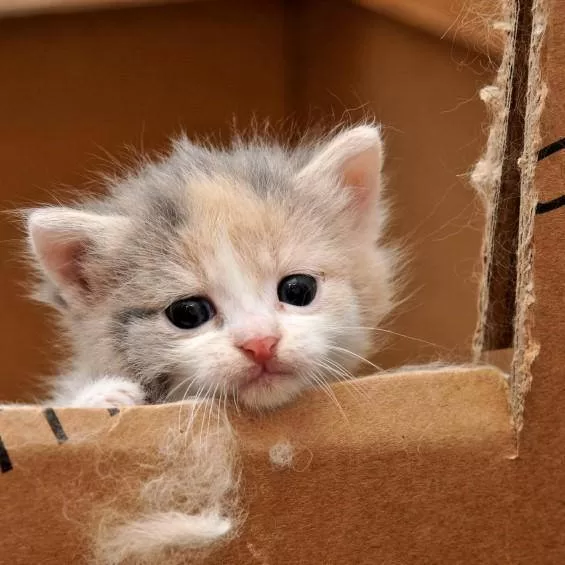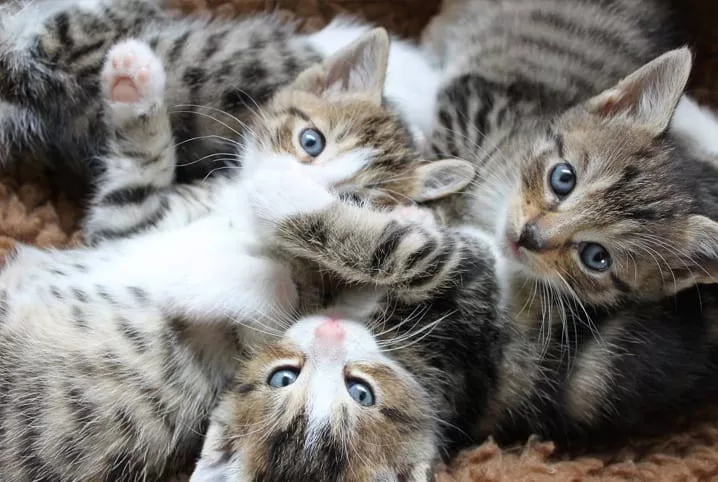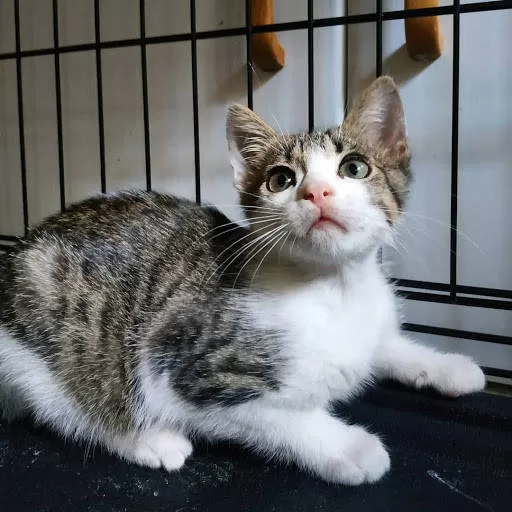Introduction to Cat Adoption
Have you ever thought about opening your heart and home to an adopted cat? Responsible adoption is a noble and essential attitude in the world of animales sin lar. It is important to know the process, whether for a small sized female or a large sized male.
There are many myths about adoption, such as the idea that female Siamese cats have a tougher character. However, every cat is unique, regardless of gender or size. On this website, we are going to reveal these and other truths about adopting cats . So grab your cookies, get comfortable and get ready to find out everything you need to know about cat adoption on our platform!

Benefits of Adopting a Cat
Emotional Benefits
Adopting a cat can have many emotional benefits. These small animals are known for their ability to provide comfort and companionship. They can be a great source of joy and unconditional love, which can significantly improve your emotional well-being.
Cats have a unique way of connecting with humans. They seem to understand when you are sad or stressed and will often come over to offer comfort. Also, taking care of a cat can help you feel more fulfilled and happy.
For example: If you’ve had a particularly difficult day at work, arriving home to find your cat waiting for you can immediately lift your spirits.
Physical Benefits
In addition to the emotional benefits, adopting a cat can also have remarkable physical benefits. Studies show that owning a cat can help reduce stress and lower blood pressure. This is because petting a cat releases endorphins in the brain, which are natural body chemicals that promote feelings of happiness and relaxation.
- Stress Reduction
- Decreased blood pressure
Social Benefits
Finally, adopting a cat also has important social benefits. Having a pet is a great way to teach children responsibility. Taking care of an animal requires commitment and dedication, valuable skills that children can carry with them throughout their lives.
Plus, having a pet like a cat can help you connect with others who share your love of animals.

In summary, adopting a cat is not just a beneficial decision for the animal – it is also something that pays off emotionally, physically and socially for you.
Choosing the Right Cat to Adopt
Tips for choosing a cat
Adopting a cat is an important decision. It is essential to choose one that suits your lifestyle. Here are some tips:
- Consider cat energy : Some cats are more energetic and playful, while others prefer a quieter life.
- Think about the space available at home : Cats who like to climb and explore need more space.
- Take into account the time you have to dedicate to the animal : Brave cats may require more attention and care.
Importance of cat age and personality
The cat’s age and personality are crucial factors when adopting. A kitten can be a ball of energy, requiring a lot of attention and patience, while an adult cat can be more calm.
Personality traits also vary greatly among cats:
- Some are independent, while others are attached to the owners.
- Some are shy, others are brave.
It is important to observe the animal’s behavior before adoption to ensure that it is compatible with your lifestyle.

Observation of behavior in the shelter
When visiting the shelter, observe how the cats behave:
- Do they come to you or stay hidden?
- Do they seem curious or scared?
- Are they kidding each other?
These observations can give you clues about the animals’ personalities. Remember: every cat is unique! Don’t be in a hurry with this process. After all, adopting a pet is making a commitment for many years.
In summary, adopting a cat involves considerations about its lifestyle, as well as the animal’s age and personality. By observing the behavior of the animals at the shelter, you might be able to find the perfect companion for your family!
Where and How to Adopt a Cat
Finding Reliable Shelters
If you’re considering adopting a cat, the first step is to find reputable shelters or rescue organizations. There are several options available, such as:
- Municipal shelters: These places usually have many animals waiting for a new home.
- Private Rescue Organizations: Many of these organizations focus on specific breeds or have special policies for adoption.
- Adoption Fairs: Many cities hold periodic events where shelters and rescue organizations bring animals up for adoption.
It is worth remembering that it is important to research well before choosing the place of adoption. Look for reviews and comments online, talk to people who have adopted from these places, and visit in person to learn about the conditions of the animals.
Adoption Process
After finding the right place comes the adoption process. It can vary depending on the location, but generally follows these steps:
- Visit to the shelter: You will have the opportunity to meet several cats and choose the one you most identify with.
- Adoption Form: You are required to fill out a form with your personal information and answer a few questions about your lifestyle and home environment.
- Interview: Some shelters may conduct an interview to ensure you will be a good guardian for the animal.
- Adoption Fee: In some cases, there may be a fee involved in the process.
Adoption Involving Fees
Fees charged by shelters are usually used to cover part of the cost of veterinary care, food, and maintenance of the facility. They can vary widely depending on the shelter or organization.
Remember: adopting an animal is a big responsibility that requires time, patience and financial resources. Make sure you are ready for this before making your final decision.
In conclusion, adoption is a beautiful act that can change not only the pet’s life but also yours!

Preparing the House for an Adopted Cat
Practical advice for preparing the house
Before welcoming a new feline member into your home, it’s essential to make a few changes. First, you need to make sure that all potential dangers are out of the cat’s reach. This includes cleaning chemicals, poisonous plants, and small objects that can be swallowed.
In addition, it is important to create spaces where the cat can hide and relax. Think cardboard boxes or comfy cat beds. And don’t forget: cats love to scratch ! So invest in a good scratching post to prevent your furniture from being damaged.
List of essential items
To receive an adopted cat at home you will need:
- Food and water: Choose a food suitable for your cat’s age and weight. If he is kg sterilized, there are specific rations.
- Litter box: Essential for your cat’s needs.
- Toys: To keep your new friend entertained.
- Scratching: As mentioned earlier, it is vital to satisfy a cat’s natural scratching instinct.
- Bed: A comfortable place for your new friend to rest.
Creating a safe and welcoming environment
The ultimate goal is to create a safe and nurturing environment for your new feline family member.
First, make sure all windows are secure – cats are known to be curious and may try to climb out of a window if given the opportunity.
Also, make sure everyone in the house knows how to handle the cat properly – this includes not pulling the tail or ears, not disturbing it while it is eating or sleeping, and always supervising young children when they are interacting with the animal.
Also remember that adaptation can take some time – be patient and give your cat space when she needs it.
In conclusion (but remember we’re skipping the conclusion), preparing your home for an adopted cat involves more than just buying a few basic supplies – it also means creating a safe and nurturing environment where they can thrive.
Necessary Care After Adoption
Veterinary Care
After adopting a cat, it is essential to take the new family member to the veterinarian. The professional will perform a general check-up to ensure that the animal is healthy and does not have any hidden illnesses. In addition, the veterinarian will also administer the necessary vaccinations and may recommend neutering/neutering to prevent future health and behavioral issues.
- Vaccinations: Vaccinations protect cats against several common diseases such as rabies, feline herpesvirus, feline calicivirus, and panleukopenia.
- Spaying/Neutering: This procedure helps prevent health problems like breast cancer in females and prostate cancer in males. It also reduces undesirable behaviors such as territorial marking with urine.
Food and Exercise
Proper nutrition is essential to maintain your adopted cat’s physical well-being . A balanced diet should include a mix of wet and dry foods.
- Wet Foods: These are great for hydrating the cat and are generally more palatable.
- Dry Food: Helps keep teeth clean and is more convenient to serve.
Regular exercise is also important to keep your cat healthy and happy . Interactive toys, scratching posts or even a simple ball of paper can help keep your cat physically active.
Socialization and Basic Training
After you bring your new furry member home, you need to spend some time on socialization and basic training.
- Socialization: Allow your cat to explore its new home at its own pace. Avoid forcing interactions with other animals or people until he is comfortable.
- Basic Training: Teach your cat where important things are located (like the litter box) within the first few days at home.
Adopting a cat can be an incredibly rewarding experience if you’re prepared to invest the time, love, and proper care in the process!
Solutions to Common Post-Adoption Problems
Anxiety and Aggressiveness
Adopting a cat can be a wonderful experience, but it can also come with some challenges. One of the most common problems many adopters face is dealing with separation anxiety or unexpected aggression from the animal. This can be particularly difficult if you are not familiar with the signs of anxiety in cats.
Here are some effective strategies:
- Create a safe environment: Cats like high places where they can observe their surroundings.
- Interactive Toys: They help keep your cat busy when you’re not around.
- Regular routine: Maintain regular times for feeding, playing and resting.
Excessive Fear and Territorial Marking
Another common behavioral problem in adopted animals is excessive fear or unwanted territorial marking.
Some tips include:
- Gradual Socialization: Introduce new people and environments slowly.
- Make Your Cat Feel Safe: Provide comfortable hiding places in the home.
- Regular cleaning: Wash the marked areas with specific cleaning products to eliminate the smell.
Professional Consulting
If these problems persist, you may need to seek professional help, such as behavioral counselors. They can provide you with personalized guidance on how to best handle your cat’s behavior.
Some resources available are:
- animal behavior therapists
- Veterinarians specializing in behavior
- Online support groups for adopted pet owners
Always remember, every cat is unique and requires a unique approach. With patience, understanding, and love, you can overcome any obstacles that stand in the way of successful adoption!
Conclusion: Inspirations from Adoption Stories
Adopting a cat can bring many benefits, from unconditional love to stress reduction. Choosing the right cat to adopt is crucial to ensuring a harmonious coexistence. There are several places where you can adopt a cat and each process has its own particularities.
Preparing your home to welcome a new member of the feline family is essential. And don’t forget the necessary post-adoption care, such as regular visits to the vet and attention to your new friend’s food and hygiene.
Even with all the preparations, post-adoption issues can arise. Do not freak out! There are solutions to most of these problems that can help you create a happy, healthy environment for your cat.
Now that you know all the stages of adopting a cat, how about starting the search for your new companion? Remember, every cat deserves a second chance!
Frequently Asked Questions about Cat Adoption
Where is the best place to adopt a cat?
There are several options, including local animal shelters, rescue groups, and even online platforms dedicated to pet adoption.
How can I know which cat is right for me?
Consider factors such as the animal’s age (puppy or adult), temperament (active or calm), and special needs (specific medications or diets).
What are the main care after adoption?
The most important thing is to ensure regular visits to the vet for check-ups and vaccinations. Also, offer a balanced diet and keep the environment clean.
What are some common post-adoption issues?
Some common problems include difficulty adapting to new surroundings, aggressive or fearful behavior, and previously undetected health problems.
How can I prepare my home to receive an adopted cat?
Make sure you have a clean litter box, adequate food, constantly available fresh water, and interactive toys. It is also important to create safe spaces where the cat can hide when it feels the need.
External Reference:

